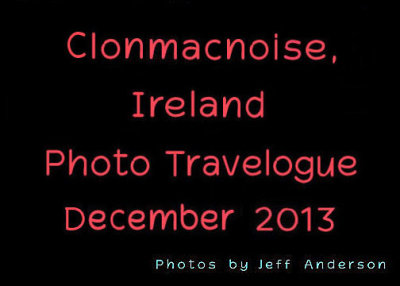
Clonmacnoise Ireland cover page. |
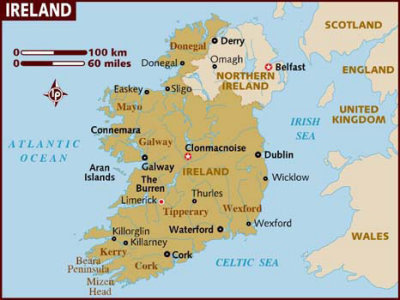
Map of Ireland with the star indicating Clonmacnoise. |
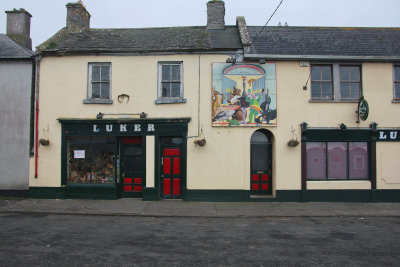
On the way to Clonmacnoise is Luker's Bar, located near the banks of the River Shannon. |
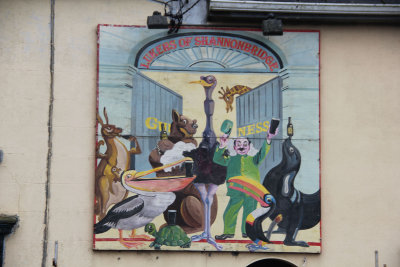
Mural at Luker's Bar, one of Ireland's most authentic old-world bars. It is virtually unchanged since the 1750’s. |
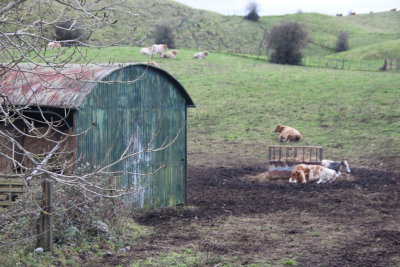
Farm nearby Clonmacnoise with cows grazing. |

Bales of hay in a shed at the farm. |
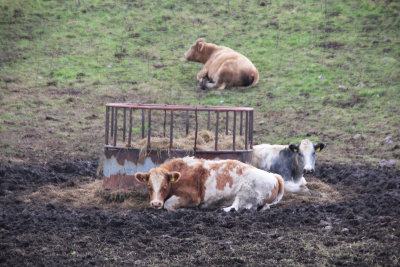
Close-up of the cows. |
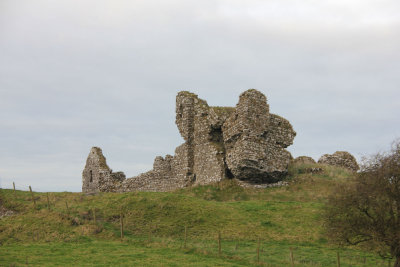
Ruins of Clonmacnoise Castle. It was built by the Chief Governor of Ireland, Henry of London, in 1214 and was destroyed by 1300. |
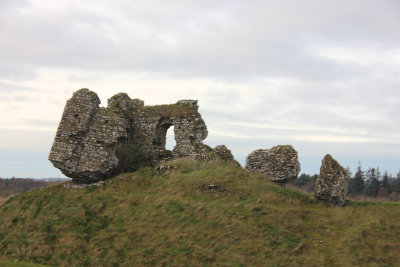
The castle was constructed to gain control over the midlands and guard the bridge across the River Shannon. |
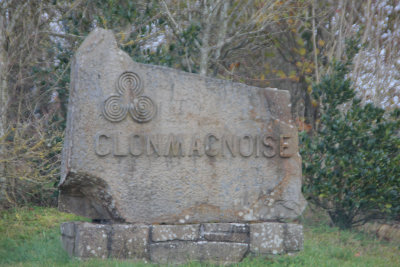
Stone sign at the entrance of Clonmacnoise. |
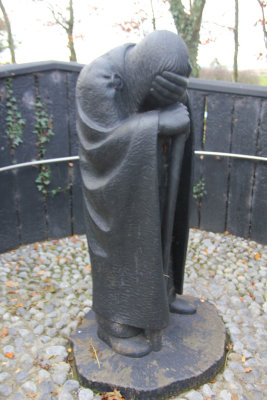
Statue at the entrance of Clonmacnoise of "The Pilgrim." It represents Aedh, son of Colcon, Chief of Oriel. |
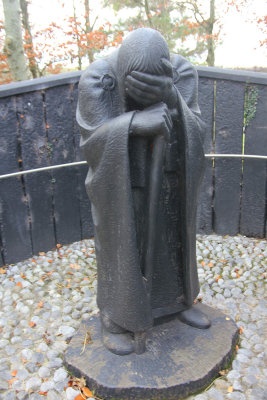
Aedh is said to have been the first pilgrim to go to Clonmacnoise. Upon arrival, he collapsed from fatigue and died. |
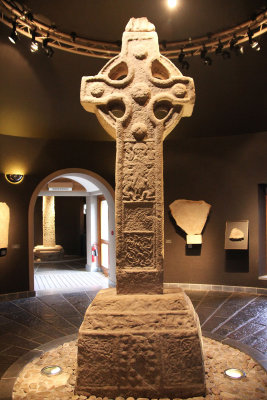
The High Cross on exhibit at the Clonmacnoise Visitors' Centre. There are about 70 stone high crosses remaining in Ireland. |

Recreation of a wooden oratory (dairthech) found in the center of ancient monasteries in early Christian Ireland. |
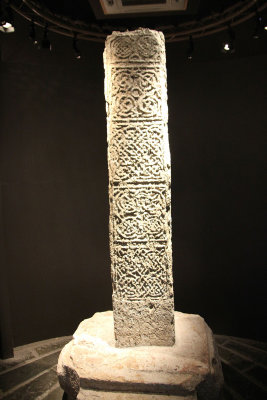
The North Cross is thought to be the oldest cross at Clonmacnoise (around 800 AD). Only the shaft and base survive. |

One of approximately 700 decorative slabs found at Clonmacnoise. |
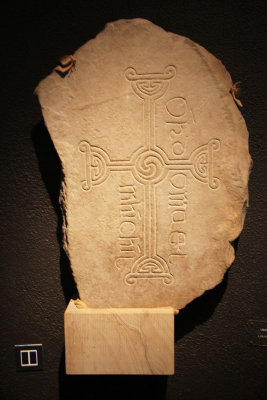
Another decorative slab. They lay horizontally on the ground and were used as burial covers. |
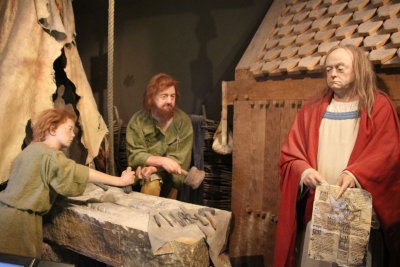
Recreation of a stonemason's workshop at the Visitors' Centre at Clonmacnoise. |

O'Rourke's Tower stands in the northwest corner of the old graveyard. It was originally on the outside of the monastic walls. |
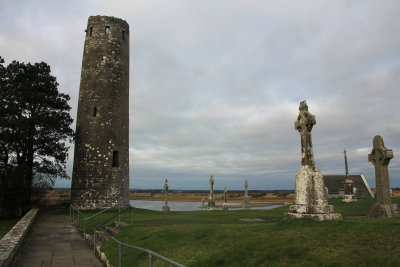
Records indicate that it was finished in 1124 by Turlough O'Connor, King of Connacht. |
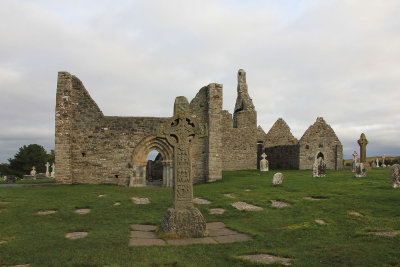
Replica of the Cross of the Scriptures in front of the Cathedral. It is the largest church at Clonmacnoise (started around 909). |

The Cathedral was recently restored with the Gothic-style north doorway called the Whispering Arch (from the 15th century). |
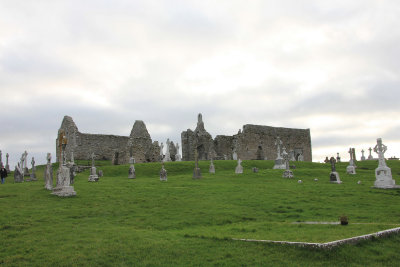
Clonmacnoise Cemetery with the Cathedral in the background. |
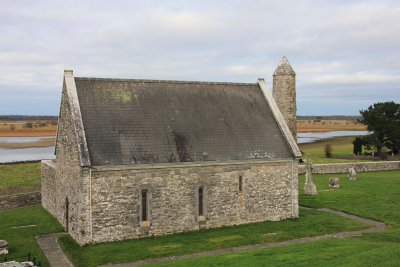
Temple Connor was built in the 11th century by Cathal O' Connor. It has been used by the Anglican Church since the 18th century. |

Tombstone of John Joseph L'Estrange (1878-1898), from Cloghan. Also, his father, son-in-law and wife are buried here. |
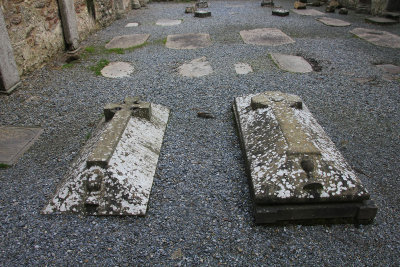
Stone grave covers at Clonmacnoise Monastery. |

Some of the many gravestones and tall crosses at Clonmacnoise monastery. |
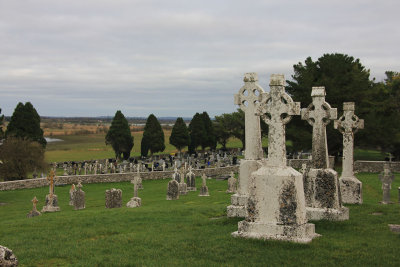
Tall crosses in the foreground. |

More gravestones and tall crosses at Clonmacnoise Cemetery. |
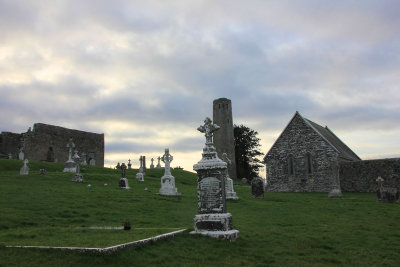
Tombstone for William Keegan (died 1897) aged 44, his wife Mary and children Thomas and John. |
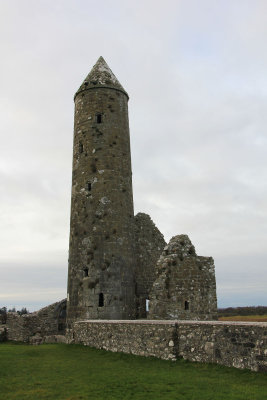
Next to the River Shannon is Temple Finghin, a ruin of Romanesque church with a round bell tower. It was built about 1160-70. |

Close-up of more graves at Clonmacnoise Monastery. |
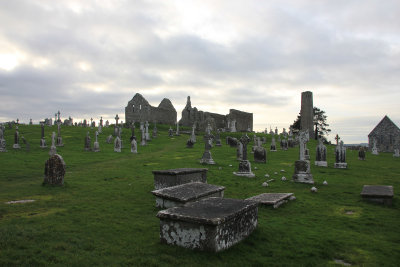
Overview of Clonmacnoise Cemetery with the Cathedral in the background. |











